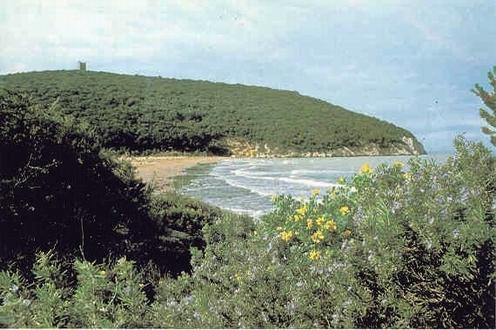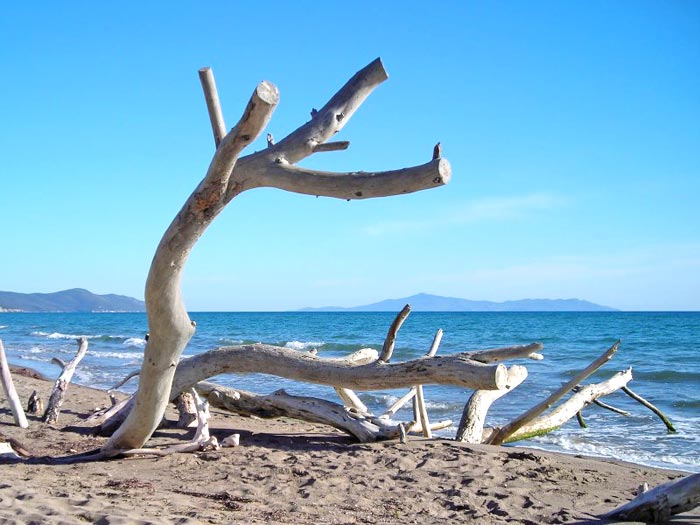
Maremma Regional Park
This post is also available in:
 Italiano (Italian)
Italiano (Italian)
The Maremma Regional Park, in the province of Grosseto, was the first park Tuscany, established in June 1975.
The park covers an area of 24.200 acres and extends along the coast from Principina a Mare (municipality of Grosseto) to Talamone (municipality of Orbetello).
Inside the park, there’s marshland near the mouth of the Ombrone River, which is home to important colonies of birds; further south, the Uccellina Mountains are covered by dense Mediterranean scrub and, to the east, by abundant grass. The other relevant habitats are the Mediterranean scrub, the rows and trees, as well as little thickets of stone pines.
FLORA
The Maremma Regional Park features different types of vegetation in wooded, coastal and marshy areas. The woodland vegetation is made of holm oaks (Quercus ilex), up to 39-ft high, mock privets (Phillyrea latifolia), strawberry trees (Arbutus unedo), mastic trees (Viburnum lentiscus), laurustine (Viburnum tinus), tree heather (Erica arborea), and cork oaks (Quercus suber).
On the eastern and northern slopes, the holm oak forest is enriched with species such as the downy oak (Quercus pubescens), the manna ash (Fraxinus ornus), the common hawthorn (Crataegus monogyna), and the old man’s beard (Clematis vitalba).
The coast, due to the inconsistency of the substrate and the high concentration of salts, represents a poor habitat for most plants, but there are species that can withstand all that saltiness. Those very species are called psammophiles, that is, “lovers of sandy soils”. The following species can be found here: Cakile maritimum, Xanthium italicum, Euphorbia peplis, and Sporobulus pungens.
Further inland, species such as Euphorbia paralis, Echinophora spinosa, and Eryngium maritimum are abundant, using a peculiar root system capable of a much better grip on the sandy substrate and to facilitate the formation of dunes due to their remarkable thickness.
The marsh vegetation, where the brackish waters stagnate, is made of grass and low marsh shrubs, such as Artemisia coerulescens, Carex extensa, Juncus maritimus, and glasswort. In the areas affected by seasonal flooding and where marshy land used to be, there are rushes and reeds.
FAUNA
The thickest scrub is a refuge for wild boars and foxes, while roe deers live in the mixed wood of holm oaks, Turkey oaks and downy oaks; due to the remarkable width of their horns, fallow deers are mainly found in the pine forests. In the wide spaces of the hilly areas of the Uccellina and in the flat areas towards the sea, Maremma cattle are raised in the wild, with imposing size, large horns, and coats in various shades of grey. Maremma horses are also bred in the wild.
Another mammal typical of this place is the porcupine, with a stocky body and the spined-back featuring black and white bands.
Wetlands are mainly populated by migratory bird species. Among the water birds which can be observed all year round, there are mallards, hens, coots, little grebes, grey herons, and little egrets.
This post is also available in:
 Italiano (Italian)
Italiano (Italian)
Contatti
Via del Bersagliere, 7/9 - Grosseto(GR)
0564 393211 - +39 0564 407098
info@parco-maremma.it




